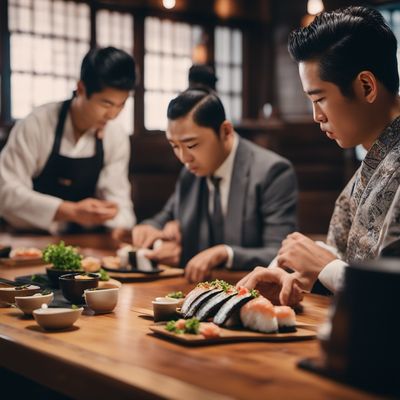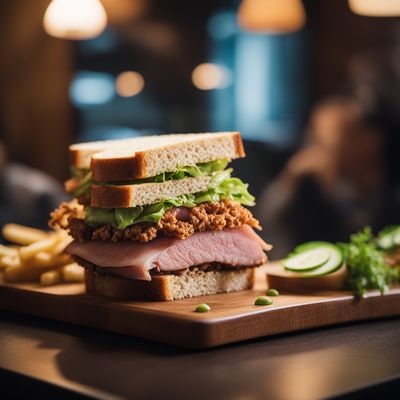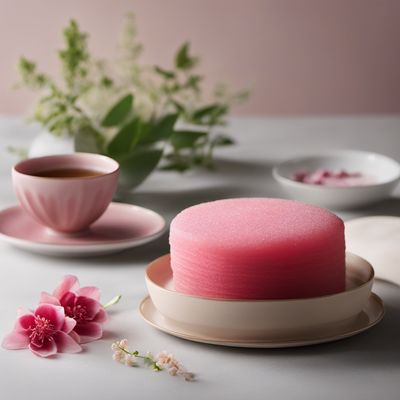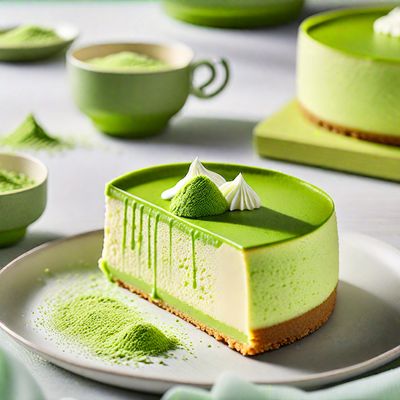
Recipe
Karē Udon
Savory Curry Udon Delight
4.7 out of 5
Karē Udon is a popular Japanese dish that combines the comforting flavors of udon noodles with a rich and aromatic curry sauce. This recipe brings together the best of both worlds, creating a hearty and satisfying meal.
Metadata
Preparation time
15 minutes
Cooking time
20 minutes
Total time
35 minutes
Yields
4 servings
Preparation difficulty
Easy
Suitable for
Pescatarian, Dairy-free, Nut-free, Egg-free, Gluten-free (if using gluten-free udon noodles)
Allergens
Soy (in soy sauce), Wheat (in udon noodles)
Not suitable for
Vegan, Vegetarian, Paleo, Keto, Low-carb
Ingredients
-
250g (8.8 oz) udon noodles 250g (8.8 oz) udon noodles
-
1 tablespoon vegetable oil 1 tablespoon vegetable oil
-
1 onion, thinly sliced 1 onion, thinly sliced
-
2 cloves of garlic, minced 2 cloves of garlic, minced
-
1 carrot, sliced into thin strips 1 carrot, sliced into thin strips
-
200g (7 oz) thinly sliced beef 200g (7 oz) thinly sliced beef
-
2 tablespoons curry powder 2 tablespoons curry powder
-
1 tablespoon tomato paste 1 tablespoon tomato paste
-
2 cups (470ml) vegetable broth 2 cups (470ml) vegetable broth
-
1 tablespoon soy sauce 1 tablespoon soy sauce
-
1 tablespoon Worcestershire sauce 1 tablespoon Worcestershire sauce
-
1 tablespoon honey 1 tablespoon honey
-
Salt and pepper, to taste Salt and pepper, to taste
-
Green onions, chopped (for garnish) Green onions, chopped (for garnish)
-
Pickled ginger (for serving) Pickled ginger (for serving)
Nutrition
- Calories (kcal / KJ): 380 kcal / 1590 KJ
- Fat (total, saturated): 12g, 3g
- Carbohydrates (total, sugars): 45g, 8g
- Protein: 22g
- Fiber: 5g
- Salt: 2g
Preparation
-
1.Cook the udon noodles according to the package instructions. Drain and set aside.
-
2.Heat the vegetable oil in a large pan or wok over medium heat.
-
3.Add the sliced onion and minced garlic to the pan and sauté until the onion becomes translucent.
-
4.Add the sliced carrot and beef to the pan and cook until the beef is browned.
-
5.In a small bowl, mix together the curry powder and tomato paste to form a paste.
-
6.Add the curry paste to the pan and stir well to coat the meat and vegetables.
-
7.Pour in the vegetable broth, soy sauce, Worcestershire sauce, and honey. Stir to combine.
-
8.Bring the mixture to a simmer and let it cook for about 10 minutes, or until the sauce thickens slightly.
-
9.Season with salt and pepper to taste.
-
10.Divide the cooked udon noodles into serving bowls and ladle the curry sauce over the noodles.
-
11.Garnish with chopped green onions and serve with pickled ginger on the side.
Treat your ingredients with care...
- Udon noodles — Cook the udon noodles according to the package instructions, but make sure to slightly undercook them as they will continue to cook when added to the curry sauce.
- Curry powder — Use a good quality curry powder to ensure a flavorful and aromatic sauce.
- Beef — For a leaner option, you can use thinly sliced chicken or tofu instead of beef.
- Pickled ginger — If you can't find pickled ginger, you can substitute it with thinly sliced fresh ginger for a similar flavor.
Tips & Tricks
- To add more depth of flavor to the curry sauce, you can add a splash of coconut milk or a dollop of peanut butter.
- If you prefer a spicier curry, you can add a pinch of cayenne pepper or red pepper flakes to the sauce.
- Feel free to customize the vegetables in the dish by adding bell peppers, mushrooms, or snow peas.
- Leftovers can be stored in the refrigerator for up to 3 days. Reheat gently on the stovetop or in the microwave, adding a splash of water or broth to loosen the sauce if needed.
- Serve the Karē Udon with a side of Japanese pickles or a simple cucumber salad for a refreshing contrast to the rich curry flavors.
Serving advice
Serve the Karē Udon hot, garnished with chopped green onions and accompanied by pickled ginger on the side. It pairs well with a bowl of miso soup and a side of steamed edamame for a complete Japanese meal experience.
Presentation advice
To enhance the presentation, arrange the udon noodles neatly in the center of the bowl and ladle the curry sauce over them. Garnish with a sprinkle of chopped green onions for a pop of color. Serve the pickled ginger in a small dish on the side for guests to add according to their preference.
More recipes...
More Japanese cuisine dishes » Browse all

Iwashi nigiri sushi
Sardine Nigiri
Iwashi nigiri sushi is a traditional Japanese dish that consists of a small ball of sushi rice topped with a slice of fresh sardine. The dish is...

Monaka
Monaka is a Japanese dessert made from two crispy wafers filled with sweet fillings such as red bean paste or ice cream.

Wagyu katsu sando
Wagyu katsu sandwich
The wagyu katsu sando is a Japanese sandwich made with breaded and fried wagyu beef, tonkatsu sauce, and white bread. It is a popular street food...






